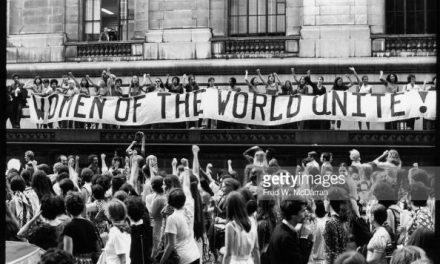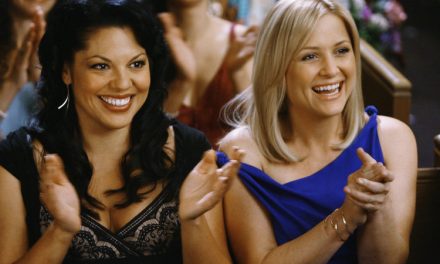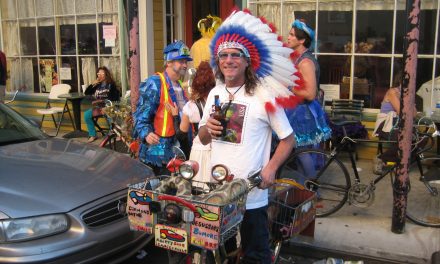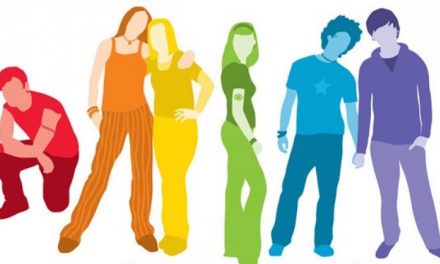
Roller Derby: Alternative, But Still White

Above image is from Slam, a new comic about roller derby players. Art by Veronica Fish.
An Ever-Changing Experience
Since entering the “young adult” stage of my life, I can easily identify a key interest that has had profound impact on my personal development: roller derby. The sport took me in like nothing else I’ve experienced. However, my relationship and understanding of it has changed over time as I began to understand my race, gender, and systemic privilege, and their effects on almost every aspect of my participation. In a way, my personal experiences as a derby player have always been political, regardless of my own intention or knowledge. But my participation has also become increasingly political as I grow more aware of issues of gender and race, and as my peers do the same. I will explore how my experiences with roller derby have occurred and changed over time because of both internal and external forces. This illustrates how my “personal is political” in the context of systemic privilege and oppression, and the struggle that I sometimes experience when I begin to see the cracks in my most loved activities.
Personal Background
It is important to understand who I am, and where I am from. I am a white, cisgendered woman with a college education and a steady, above-average paying job. I grew up in the Southern U.S., moving between Georgia, Florida, Texas, and Louisiana, and attending public schools in well-funded school districts. I will graduate with very little student debt, and I was able to fund my own study abroad experience in Finland for six months. I am in a long-term heterosexual relationship, and have never had to fear for my safety because of my race, class, or overall social position. This is a reasonable overview of my demographic status.
I discovered roller derby in 2014. It has provided me challenging, inspiring, and new experiences that have profoundly shaped my character and approach to life. However, this is not an equally available opportunity for everyone. Roller derby worldwide engages mostly white participants, and individuals unlike myself often face significant barriers to playing or otherwise joining the sport. It is fundamentally a privilege for me to skate with my team three times a week.
White privilege has been described as “winning a lottery you didn’t even know you were playing.” White, straight, cisgendered individuals are automatically granted a whole host of benefits in most Western countries, and in fact much of the world. Health, safety, opportunity, education, and more are intimately related to race and the color of one’s skin – we’ve learned this in class, and sometimes from popular media and dialogues. Based on my background, I meet nearly all of these requirements (and several others), placing me in a privileged societal position. This influence has been present from my birth, and has affected every aspect of my life in some way.
Revolutionary…ish
My interest in roller derby began innocuously; I learned of the sport’s existence, researched the local team, and began training with them within less than a month. This sport is still considered somewhat “underground.” It is the only full-contact sport that was founded for female participants; it evolved from the dramatic and over-the-top 1960s skate races to the athletic competitions that now take place in almost every country. There are roughly 2,000 leagues worldwide. Although men play roller derby as well, on both coed and men’s teams, roller derby is a primarily female sport that regularly undermines hegemonic gender roles and definitions. By virtue of the hard-hitting and competitive culture, women are encouraged to break the traditional female stereotypes of being weak, passive, and averse to intense sporting experiences. Additionally, physical expectations of women are disrupted within the sport by encouraging and embracing all body types, and dramatic costumes that are often intentionally sexual in a bid to actually acknowledge and subvert the male gaze.
However, roller derby is also, like most sports, exclusive in many ways. By necessity, it is an expensive activity – players are required to use mouth guards; elbow, wrist, and knee pads; helmets; and expensive quad skates. Even the cheapest roller derby kit requires roughly $200 of gear. When I look around at practice and see only other white individuals, this is a reason why. Individuals and families of color nationwide have less accumulated wealth, and make less money than whites. Even worse, this gap is widening. Internalized and structural racism also makes it more difficult for people of color to progress economically, affecting their free time for recreation and expendable money for such activities. When it comes to recreational sports, white people ultimately have more opportunity to participate.
Baby Steps
The structural and economic barriers to playing roller derby, in addition to the sport’s still somewhat limited locations and market awareness, can be seen in the makeup of most teams. Even in cities that are very racially and ethnically diverse, teams are usually largely white. However, many teams, groups, and individuals are taking active steps to create a community of players of color, and attract new players who may not be traditionally represented in the sport. Several online communities, such as Shades of Skate on Facebook, exist to promote and connect roller derby and quad skaters of color. Some leagues are also quite politically active, taking public stances on issues that affect disenfranchised and underserved communities in their areas. These efforts may be slowly creating a new awareness and attraction to the sport for many people, but little research exists on the demographics of derby players and officials.
This development, especially of online “safe spaces,” makes me incredibly happy. But it also serves as a reminder of how far the sport has to go – roller derby, while already a very counterculture and revolutionary sport for its take on hegemonic femininity, is simultaneously a whitewashed sport with many barriers. I believe that now, while the sport is still very young (2017 will be the 16th year of its modern existence), is the perfect time for a dialogue about race and privilege in roller derby. Before sponsorships and professional opportunities take over, and while players can still get in on the “ground floor,” we as players and as an athletic community should be actively working to ensure that individuals of every race and ethnicity are represented and heard in the sport, and that issues disproportionately affecting some are taken seriously.
I will admit that the more I learn about these issues in one of the greatest parts of my life, I always feel a tinge of conflict. It is hard to hear faults against your heroes, or the thing that brings you closest to being a hero yourself. This is good. By understanding that oppression influence even relatively underground activities, I better understand the overwhelming nature of systemic racism. Roller derby is a potential frontier for recreational and athletic equality, and my own active involvement in solutions and constant alliance.








